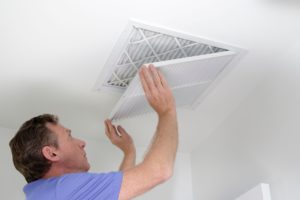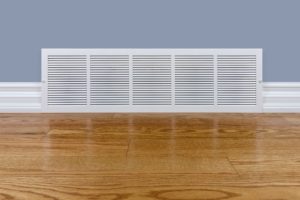When your family relies on AC to stay cool and comfortable, it helps to know a little about how the system works. You don’t have to call a repair service every time the HVAC hiccups and, if you know the tricks, you can fix a lot of simple heating or cooling challenges on your own. The DIY method is a practical approach to home problem solving, one you can apply to an AC drain clog.
A clogged AC drain means that the condensate created by the cooling coils can’t safely leave the house. This can cause buildup, leaks, mold, as well as water damage to the house. Many ACs are designed to switch off entirely when the AC drain clogs, and this can be the most frustrating of all. Fortunately, if you can spot the drain clog, you can often fix it solo.
Step 1. Identify the Signs of an AC Drain Clog
The first step is to identify your AC drain clog. Look for buildup in the drip pan or signs of drips or water damage around your AC unit. Sniff for mold where the area might be damp as well as check to see if drips are reaching the outdoor end of the pipe. If your AC is sitting in a pan of water or if there is moisture nearby, you may have an AC drain clog with a serious water backup concern.
Step 2. Gather What You’ll Need for DIY AC Drain Repair
- Supplies:
- Gloves
- Wrench
- Bucket
- Pitcher
- Funnel
- White Vinegar
- Optional:
- Flexible Drain Brush
- Wet Vac
Step 3. Turn Off the AC at the Breaker
Once you’ve resolved to clear the AC drain, start by switching off the HVAC unit. The safest way to do this is at the breaker so that no electricity can run through the unit while you’re working with its plumbing. Find your AC breaker and disconnect the circuit.
Step 4. Identify the AC Drain Line Junction and Terminus
Now find the two ends of your AC drain line. The first should be easy to spot, somewhere around the outside of your house. Often, it comes out near the outdoor unit or drips over the edge of the roof. The second is where the line exits your AC unit with the condensate. This will be a T-junction, ideally with a cap that you can access for maintenance. If you do not have an access cap, it is possible to cut the line but should only be done by those experienced in PVC plumbing techniques.
Additionally, place your bucket at the outflow point to catch any built-up water that is ejected when the clog is cleared.
Step 5. Clean Out the Trap with a Flexible Brush-Snake
Start at the cap near your AC unit. Open the drain valve and insert your flexible brush. This is a long wire brush handle with a bristled brush at the end. It’s like a snake but for scrubbing the inside of a pipe. AC drain clogs are often made of very soft but persistent materials. Often, a stiff-bristle brush can break up a clog near the access point. The most likely place is in the trap, the dip or curve in the AC’s PVC drain pipe.
Step 6. Flush the Line with Hot Vinegar
Open the cap at the top end of your AC drain line and position a funnel in the aperture. Boil a pot of water and white vinegar and pour it down the funnel. This combination, heavy on the vinegar, should be strong enough to melt most of the algae as well as mineral buildup that can clog your AC drain pipe. Leave the vinegar for 30 minutes before trying another water flush.
Step 7. Use a Wet Vac to Suction the Clog
If you have a powerful wet vac, you have a third option for DIY AC clog management. You can also try to suck the clog out. Create a seal with the wet vac hose attachment and the far end of the AC drain pipe. Then turn on the vac and let it use suction power to clear out the line. If the suction is strong enough, it can grab hold of the clogging mass and pull it out into the vacuum tank. Be prepared for an outflowing of water if or when the clog is cleared.
Get a Professional Drain Assessment
Finally, if all the DIY drain maintenance tricks didn’t work then it’s time to call the professionals. DIY goes as far as your tools and training can take you. From there, you may need to address more delicate problems inside the HVAC or more stubborn drain solutions inside the length of the pipe. For the HVAC services you need when you need them, contact us today!





